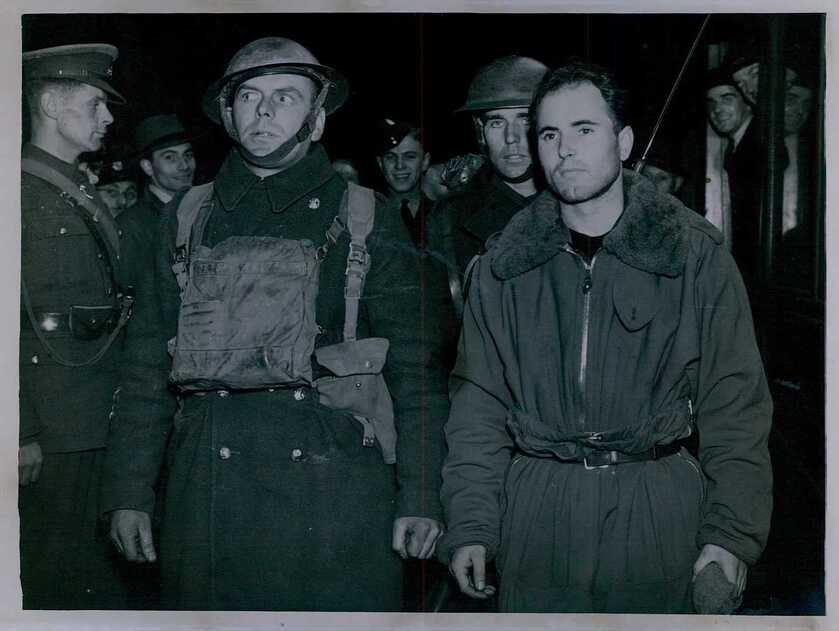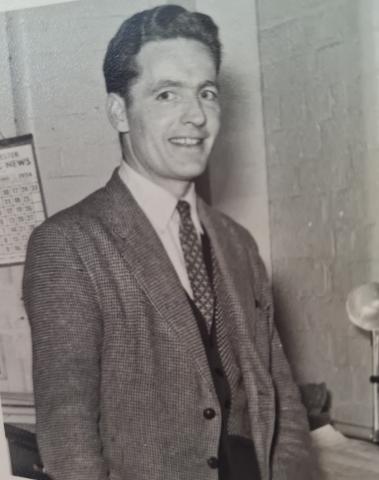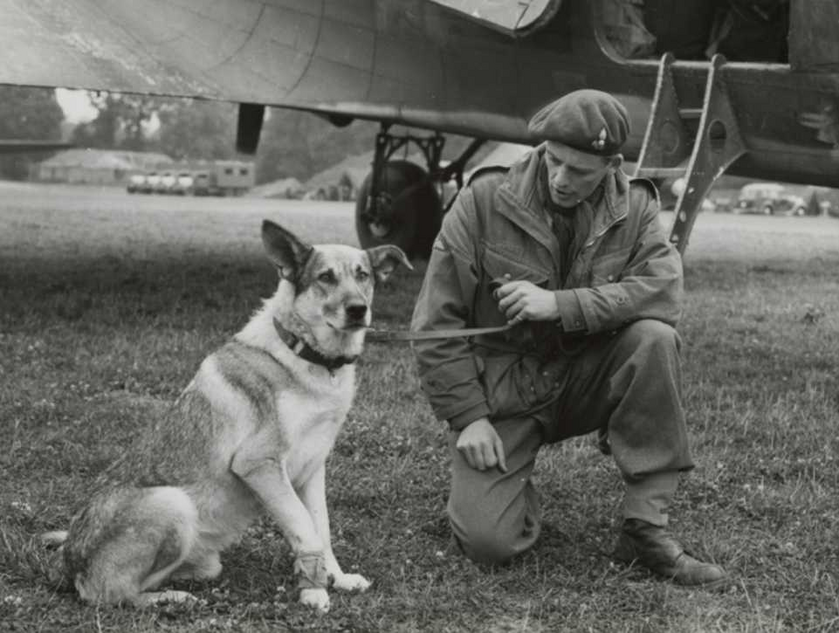Trained at Bulford, Ringway, Hardwick Hall, encompassing Parachute Regiment, Glider Pilot Regiment & RAF 38 & 46 Group.
Hoping to put up items of interest for researchers or those with family links to the division.
Looking to post collation of World War II photos, articles, books and booklets & any other history related topics.
Captain David ‘Jock’ McCowan Hunter, M.C. No. 3 Platoon, A Company, 7th Parachute Battalion (235346)
Captain David McCowan Hunter was born on 28 August, 1922, at Burnholme, Cumnock, Scotland. He joined the army in January 1942, having obtained his OTC certificates from George Watson’s College in Edinburgh and at St Andrews, he went straight to O.T.C.U. at Barmouth, Wales in June 1942, being commissioned into the Royal Scots as 2nd Lieutenant on 6 June 1942.
In December 1943 he volunteered to join the Parachute Regiment, transferring from the oldest regiment to the newest (mainly ‘to impress the girls’, as recorded in his personal memoir), and after four weeks of intense physical tests and parachute training he joined the 7th (Light Infantry) Battalion, Parachute Regiment, part of the Army Air Corps in late January 1944. This new elite unit, created in 1942, initially included the Glider Pilot Regiment, seventeen Battalions of the Parachute Regiment, the Air Landing Regiments, Air Observation Post Squadrons, and by 1944 would include elements of the Special Air Service.
The 7th Battalion formed part of the larger 6th Airborne Division which would play a major role on ‘D-Day’. Lieutenant Hunter was initially posted to a reserve company, but once ‘Haggis’ Fleming was injured by a dropped grenade, ‘Jock’ Hunter was recommended by the Commanding Officer Lieutenant Colonel R. G. Pine-Coffin (aptly nicknamed ‘Wooden Box’) to lead “A” Company’s No.3 Platoon as Platoon Commander. This came at the expense of several more-established English officers, as the platoon contained a number of Scotsmen amongst its number. This turn of events led to his participation in ‘Operation Tonga’.
Charle's Wheeler's D-Day: Turning The Tide (1994)
Part I
Major Howard
Wally Parr
Bill Gray
Sgt. Leonard Daniels,
Lt-Col. Otway
Sgt. Sid Knight
Major-General Gale, the Division's commander, addresses Divisional troops at Harwell aerodrome.
Airborne sappers place detonators into shrapnel mines.
Military Policemen attend to their Matchless and Enfield motorcycles.
An Airborne signals lieutenant and private paint the Liberation star on a cloth panel. A corporal performs a 'native' dance for off-duty signallers.
Signallers check jeep-mounted radio equipment. Engineers pack PIATs and ammunition into a parachute container. Parachute Regiment troops are issued with two 24-hour compo ration boxes, etc.
Men from the 2nd Battalion, the Oxford and Buckinghamshire Light Infantry, support platoon load ammunition and a Vickers machine gun into jeep trailers. A mechanic services a jeep.
Weapons such as a Lee-Enfield rifle, a Colt .45 automatic pistol, a Mark 5 Sten gun, a Bren gun and Nos 36 and 69 grenades are examined before being packed.
Empty Bren and Sten magazines are loaded with bullets and packed into boxes.
Airborne ...
ASSAULT UNITS PREPARE FOR THE INVASION OF EUROPE (PART 7) (Imperial War Museums)
Filmed by Sgt. L. Harris, No. 5 AFPU showing pathfinders from 22nd Independent Parachute Company and men of 2nd Bn (Airborne) OXfordshire & Buckinghamshire Light Infantry playing cricket
Loading up of Horsa gliders and parachute containers filmed at Harwell and Tarrant Rushton
Brittany Ferries Historic Talking Tours The Pegasus Trail An Account of the Operations of the 6th Airborne Division in Normandy 6th June – 17th August 1944
Not the best quality recording as this was not a transfer but a basic recording
SIDE 1
Italian airmen who were taken prisoner after their planes had been shot down over England yesterday passed through Londin this afternoon on their way to the Prisoners Camp 12th November 1940.

When a Douglas C47 Dakota aircraft of RAF Transport Command returned from France, one of the passengers was a German war dog which was wounded by men of the 6th Airborne Division when they stormed Ranville North East of Caen. The dog, named Fritz, had apparently been trained to attack anyone with firearms. It was wounded in the leg and taken behind the line where it received first aid treatment from a British Army unit before being flown to England in charge of parachutist Major Philip Wilfred Varvill.
When the Royal Australian Air Force photographer was photographing Fritz, the dog apparently thought the camera was a firearm and attempted to leap at the photographer. Fritz will be sent to do a course at a British War Dogs school when he has recovered from his wound.
This image was shot for the Daily Mail newspaper but was also reported in Australian papers.
Cpl. John Williamson, 12th Parachute Battalion taken prisoner Normandy 18th August 1944 probably captured during a night raid on Putot-En-Auge.
12th Parachute Battalion War Diary
18th August 1944 Place: Mongassard
0450 - Bn advanced through TROARN to MON GASSARD 192690 as reserve Bn to 5 Para Bde and awaits orders to continue advance. Capt J.A.N. Sim, Lieuts J.H. Duthie, Hall, Warren and Flint and 80 ORs joined from U.K. C Coy formed under Capt Sim.















